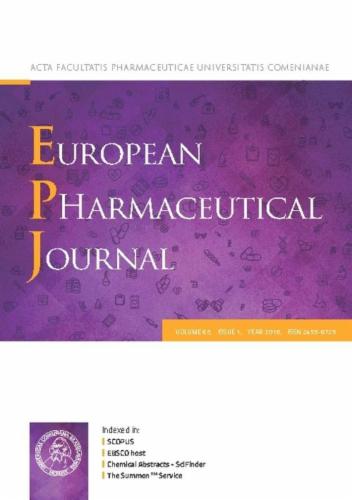靶向亚洲糖蛋白受体的亚洲糖蛋白偶联脂基纳米系统:将基因传递到肝细胞以治疗法布里病
IF 4.7
3区 医学
Q1 PHARMACOLOGY & PHARMACY
引用次数: 0
摘要
利用肝细胞的蛋白质生产能力,通过基因补充疗法重新表达α-半乳糖苷酶A (α-Gal A),是治疗法布里病(FD)最有前途的策略之一。asialal糖蛋白受体(ASGPr)已被证明是肝细胞定向纳米药物的首选靶受体之一,天然糖蛋白如asialalfetuin (AF)可以用作特异性配体。在此,我们开发了af修饰的固体脂质纳米颗粒(sln),通过不同的技术和阳离子脂质成分制备,用于通过靶向肝细胞的基因补充来恢复FD的酶缺乏症。在对载体进行理化表征后,体外对人肝细胞(Hep G2)进行细胞关联和转染效果评价,并对α-Gal A敲除小鼠进行体内静脉给药,评价其提高α-Gal A活性的能力。其疗效和靶向效果受SLN类型的影响。一般来说,含有阳离子脂质DOTAP和DODAP的混合物的载体比不含DODAP的载体表现出更高的转染效率。与不掺入AF的对照组相比,将AF掺入由DOTAP和DODAP制备的sln配制的载体中,显著提高了体外诱导α-Gal A在肝细胞中的表达效果。然而,给法布里小鼠注射AF并没有导致酶活性的显著增加。体内外相关性的缺乏证实了需要了解影响非病毒载体在生物介质中用于核酸治疗的行为的关键因素,以及在核酸递送系统药物开发的早期阶段进行体内研究的必要性。本文章由计算机程序翻译,如有差异,请以英文原文为准。

Asialofetuin-Coupled Lipid-Based nanosystems to target the Asialoglycoprotein receptor: Delivering genes to hepatocytes for the treatment of Fabry disease
Exploiting the protein production capacity of hepatocytes for de novo expression of α-Galactosidase A (α-Gal A) by gene supplementation therapy represents one of the most promising strategies for the treatment of Fabry disease (FD). The asialoglycoprotein receptor (ASGPr) has proven to be one of the target receptors of choice for hepatocyte-directed nanomedicines, and natural glycoproteins such as asialofetuin (AF) can be used as specific ligands. Herein, we have developed AF-decorated solid lipid nanoparticles (SLNs), prepared by different techniques and cationic lipid compositions, for restoring the enzyme deficiency in FD by gene supplementation targeted to hepatocytes. After the physicochemical characterization of the vectors, cell association and transfection efficacy were evaluated in vitro in human hepatocytes (Hep G2), and the capacity to increase α-Gal A activity was evaluated in vivo after intravenous administration to α-Gal A knockout mice. The efficacy and targeting effect were conditioned by the type of SLN. In general, vectors containing a mixture of the cationic lipids DOTAP and DODAP showed enhanced transfection efficacy compared to their counterparts without DODAP. The incorporation of AF in the vectors formulated with SLNs prepared with DOTAP and DODAP by hot-melt emulsification significantly improved the efficacy to induce the expression of α-Gal A in hepatocytes in vitro compared to the control without AF. However, the administration to Fabry mice did not result in a significant increase in enzyme activity. The lack of in vitro-in vivo correlation corroborates the need to understand key factors influencing the behavior of non-viral vectors in biological media for nucleic acid therapies, as well as the desirability of in vivo studies in the early stages of pharmaceutical development of nucleic acid delivery systems.
求助全文
通过发布文献求助,成功后即可免费获取论文全文。
去求助
来源期刊
CiteScore
9.60
自引率
2.20%
发文量
248
审稿时长
50 days
期刊介绍:
The journal publishes research articles, review articles and scientific commentaries on all aspects of the pharmaceutical sciences with emphasis on conceptual novelty and scientific quality. The Editors welcome articles in this multidisciplinary field, with a focus on topics relevant for drug discovery and development.
More specifically, the Journal publishes reports on medicinal chemistry, pharmacology, drug absorption and metabolism, pharmacokinetics and pharmacodynamics, pharmaceutical and biomedical analysis, drug delivery (including gene delivery), drug targeting, pharmaceutical technology, pharmaceutical biotechnology and clinical drug evaluation. The journal will typically not give priority to manuscripts focusing primarily on organic synthesis, natural products, adaptation of analytical approaches, or discussions pertaining to drug policy making.
Scientific commentaries and review articles are generally by invitation only or by consent of the Editors. Proceedings of scientific meetings may be published as special issues or supplements to the Journal.

 求助内容:
求助内容: 应助结果提醒方式:
应助结果提醒方式:


